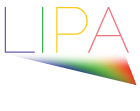Introduction
LIPA Celebrated its 10th Anniversary in May; having achieved much progress and many milestones. As an in-person gathering was still out of the question, we held two, two-hour GoToMeeting sessions. We enjoyed the inputs and memories of about 80 members, past and present; colleagues and friends. We even had some surprise guests from the earliest days of Laser illuminated projection.
The idea was to bring together many of the industry’s pioneers, visionaries, technologists and LIPA members to review, acknowledge and reminisce about the history and progress, the challenges and future trends of this radically different lighting technology.
The Sessions
The two sessions were divided into 6 topics: The Early Days, Digital Cinema, Technical Breakthroughs, The Regulatory Story, Commercialization Progress, Status and Future Developments.
We still don’t know for certain when the “first” LIP was contemplated or built, but we all learned a lot more about how early work began. We had several pioneers from COLOR, an early R&D shop that built and installed demo LIP systems in museums, sports arenas and even to project images of tanks on “disposable screens” at the US Army’s gunnery range…all in the 1990s!!
We learned about the impact of the Cinema industry’s change from Film to Digital, that enabled the use of narrow-band RGB laser light to generate the millions of colors in the Digital Cinema Initiative’s (DCI) specified color gamut. The DCinema conversion was both a blessing and curse. One the one hand, it provided a solid, if difficult to achieve, global specification and a huge (future) addressable market. This enticed a few intrepid investors to “go back into” laser technology shortly after the telecom bust of 2003. On the other hand, delays in the financing of the Digital Cinema conversion, (indeed, a global financial crisis in 2008-09), greatly delayed the expected time to market for DCinema LIPs.
The commercial availability of Blue Laser Diodes from Nichia and the extensive Laser-pumped phosphor technology from Appotronics both accelerated DCinema development and enabled a host of new, lower lumen LIP segments and applications.
Although the focus of the sessions was on Laser technology, LIPA founding members, TI and SONY provided the essential Spatial Light Modulator (SLM) technology that enabled the application of Laser illumination to high performance projection.
LIPA’s core mission, in fact its “raison d’être”, is to rationalize global Laser safety regulations to assure risk mitigation while not unduly impeding the adoption of the technology. The audience learned what a great challenge this was for LIPA, that it took years of meetings and millions in dues and in-kind contributions from members and their expert staff to achieve what would be required for robust commercialization. LIPA was able to contribute greatly to the understanding of optical hazard and risk; how to quantify it and to establish a global framework that now evaluates laser and lamp illuminated projectors the same way.
Given the magnitude of the challenge and the prerequisite of the US FDA/CDRH to start with a peer-reviewed article on the optical hazards of LIPs, it is (in retrospect), no surprise that it took so long to establish a new and more structured regulatory regime. In fact, with the help of LIPA’s Regulatory team of member experts, laser safety consultants and yes, lawyers, LIPA adopted a strategy to utilize the International Electro-Technical Commission (IEC) regulatory framework and its updating opportunities to make progress much faster outside of the US. Eventually, with the IEC formally on board, it was much easier to convince the FDA/CDRH to “conform” to new IEC global standards than to start from scratch. But it still took a long time, and success was never assured.
Ten years ago, high lumen “flagship” Cinema LIPs were demonstrated by several
LIPA members. This really put the pressure on LIPA to establish a mechanism to
bring these amazing systems into commerce.
Initially, “Laser Variances”, that is, individual FDA authorizations
were required to deploy these specialized projectors in large screen, typically
3D-capable theaters. These early
variances provided the template for future global regulatory requirements.
The consensus is that commercialization of Cinema LIPs started with a series of demos and product introductions in spring of 2014 by several LIPA members. At the same time, the brightness levels achievable with Laser Phosphor technology began breaking records every quarter. People wondered: would they every hit 10,000 lumens…? They did, and have gotten much brighter since.
As of now, LIPs are available at all brightness levels from “Pico” to 75,000 lumens; in nearly every category, from the classroom to the boardroom; from Ultra-Short Throw 4K Laser TV to gigantic, multi-projector mapping systems. Laser engine architectures now include often complex hybrids of RGB diodes + custom phosphors, optimized for the required mix of image quality, color space, power efficiency and lifetime.
Market data suggests that LIPs are now the dominant illumination technology on a dollar value (if not unit) basis. Some major projector makers have moved to all laser or all solid-state illumination, eliminating lamp-based designs from their new product offerings. (Later this year LIPA will publish a formal update on LIP Market penetration.)
The sessions wrapped up with a view to the future. The consensus was that as the global economy and in particular, Cinemas, “open up”, LIPs will lead the charge. Many multiplexes were built as or upgraded to “All-Laser” during the pandemic. And many LIPA members have developed new LIP products and product families during the past 18 months.
LIPA still has much work to do. As new designs are developed and brightness levels increase, new regulatory cases continue to emerge. Our long-term mission to assure user safety and promote business success continues, and now that mission covers nearly all projection categories, not just the cutting edge of premium Cinema.
Session Takeaways
- The development and commercialization of LIPs …TOOK A LONG TIME – at least 30 years. It took many visionaries, technologists, companies, investors, Hollywood gatekeepers…and LIPA to put all the pieces together.
- LIPA, founded in May of 2011, by about a dozen companies, developed and achieved a global regulatory rationalization strategy that has enabled very rapid adoption and no known injuries since commercialization of high brightness LIPs in 2014.
- As of 2020, all high brightness (Risk Group 3) projectors are regulated by the same standard, irrespective of light source technology – Laser and Lamp illuminated projectors are finally on the same footing
- Over time, LIPs have “paid off” all of benefits of laser illumination, predicted since the 1990s: higher brightness, better image quality, amazing color saturation, ultra-long light source lifetime, higher power efficiency (lm/watt), lower heat generation, quieter operation, remote light delivery via optical fiber and lower cost per usable lumen
- As a result of the above advances, LIPs have in ten years become the dominant projection illumination technology with a strong trend toward a fully “lamp-less” future.

